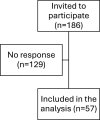Empowering primary care physicians in child and adolescent psychiatry: a needs assessment on collaborative care in Dubai
- PMID: 39588188
- PMCID: PMC11586184
- DOI: 10.3389/fmed.2024.1456212
Empowering primary care physicians in child and adolescent psychiatry: a needs assessment on collaborative care in Dubai
Abstract
Background: Child and adolescent psychiatric disorders pose significant public health concerns necessitating prompt intervention. Primary care physicians (PCPs) play a critical role as initial points of contact, facilitating early detection, management, and referral of these conditions. In Dubai, integrating mental health services into primary care faces unique challenges, highlighting the need for systemic reforms and enhanced PCP training.
Objective: This study investigated perceptions, barriers, and systemic challenges encountered by PCPs in managing child and adolescent psychiatric conditions in Dubai's primary care setting. It also assessed family physicians' involvement and preparedness in this domain.
Methods: Using a mixed-methods approach, we conducted a survey among family physicians in Dubai Health facilities and analyzed patient data from family medicine clinics. The survey evaluated formal training, preparedness, encounter frequency, and referral patterns for psychiatric care in young patients. Qualitative insights from open-ended survey questions provided additional understanding of specific challenges.
Results: Findings revealed significant gaps in formal training, with only 33.3% of respondents trained in child and adolescent psychiatry during medical education, and 21.1% participating in Continuing Medical Education (CME). A majority (54.4%) of PCPs felt unprepared to manage psychiatric care in young patients. Patient data analysis showed a predominance of male patients (59.9%) and identified Autism Spectrum Disorder (43.1%) as the most common condition, emphasizing the reliance on specialized care through a high referral rate (63.1%). Major barriers included time constraints, limited psychiatric knowledge, resistance to mental health services, systemic and structural issues, communication challenges, and resource shortages.
Conclusion: Enhanced training and systemic reforms are urgently needed to integrate mental health services effectively into Dubai's primary care. Implementing structured collaborative care models, fostering interdisciplinary collaboration, and addressing systemic barriers are crucial for improving child and adolescent psychiatric condition management. These initiatives promise better patient outcomes and more efficient healthcare resource utilization.
Keywords: Dubai; child and adolescent psychiatry; collaborative care; educational program; primary care physicians.
Copyright © 2024 Berbenyuk, Alameeri, Ismail, Zary and Sultan.
Conflict of interest statement
The authors declare that the research was conducted in the absence of any commercial or financial relationships that could be construed as a potential conflict of interest.
Figures





References
-
- James S, Smith C. Early autism diagnosis in the primary care setting. Semin Pediatr Neurol. (2020) 35:100827. - PubMed
-
- Schlesinger A, Sengupta S, Marx L, Hilt R, Martini D, DeMaso D, et al. Clinical update: collaborative mental health care for children and adolescents in pediatric primary care. J Am Acad Child Adolescent Psychiatry. (2023) 62:91–119. - PubMed
LinkOut - more resources
Full Text Sources

